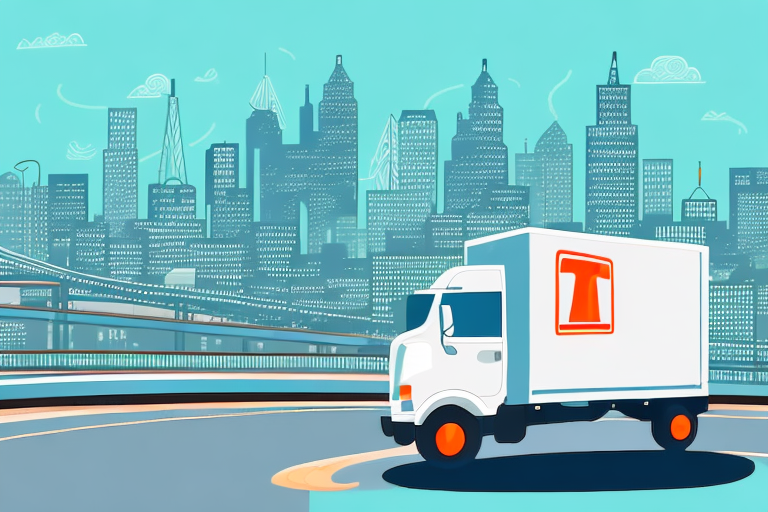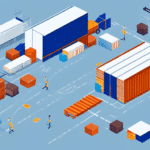Understanding Last Mile Delivery
Last mile delivery has become a pivotal component of the supply chain, particularly for businesses in the e-commerce sector. This phase involves transporting goods from a transportation hub or warehouse directly to the end customer’s doorstep. According to a report by ShipScience, last mile delivery can account for up to 53% of the total shipping cost, making it both the most expensive and critical part of the delivery process. Ensuring efficiency and reliability in this stage is essential for maintaining customer satisfaction, loyalty, and overall business success.
What is Last Mile Delivery and Why is it Important for Your Business?
Last mile delivery refers to the final step in the delivery process where goods are moved from a distribution center to the customer's location. This stage is crucial because it directly influences the customer's experience with your brand. Timely and seamless deliveries enhance customer satisfaction, foster loyalty, and encourage repeat business. With the exponential growth of e-commerce and the increasing demand for same-day delivery services, optimizing last mile delivery has never been more important.
Challenges such as unpredictable traffic and adverse weather conditions can disrupt delivery schedules, leading to delays and dissatisfied customers. To mitigate these issues, many companies are investing in advanced technologies like route optimization software and real-time GPS tracking.
Additionally, the push towards sustainability has made eco-friendly delivery practices a priority. Integrating electric vehicles and bicycles into delivery fleets not only reduces carbon footprints but also appeals to environmentally conscious consumers, thereby improving brand image.
Choosing the Right Last Mile Delivery Company
Factors to Consider
- Location and Coverage Area: Ensure the company operates within your desired regions and can effectively cover your target areas.
- Delivery Time and Speed: Assess whether the company can meet your required delivery timelines, especially for time-sensitive orders.
- Delivery Capacity and Flexibility: The provider should handle your expected delivery volumes and adapt to fluctuations in demand.
- Track Record and Reputation: Review the company’s history and customer feedback to gauge reliability and service quality.
Evaluating Efficiency and Reliability
Performance metrics are essential for assessing a last mile company’s efficiency and reliability. Key metrics include:
- Delivery Success Rate: The percentage of deliveries completed without issues such as returns or damages.
- Delivery Time: Average time taken to complete deliveries from the warehouse to the destination.
- Customer Satisfaction: Feedback and ratings from customers regarding their delivery experience.
- Communication Quality: Effectiveness of the company’s communication with both businesses and end customers.
Cost Comparison
While cost is a significant consideration, it should not overshadow the quality of service. Conducting a thorough cost comparison involves evaluating the services offered against the pricing structures. Additionally, businesses can negotiate terms to align with their budgets. Proximity to delivery destinations can also influence costs, as companies closer to the end locations may offer more competitive rates due to reduced transportation expenses.
Importance of Customer Service
Excellent customer service is vital for enhancing the overall delivery experience. Choose companies known for their responsive and supportive customer service teams. Implementing technologies like live chat, chatbots, and real-time tracking can further improve customer interactions by providing transparency and timely updates on delivery statuses.
Common Mistakes to Avoid
- Relying solely on cost without considering service quality.
- Neglecting to perform comprehensive background checks or read customer reviews.
- Selecting companies that do not operate in your required locations.
- Overlooking the company’s capacity to handle varying delivery volumes.
- Ignoring the provider's customer service capabilities.
Technology and Innovations in Last Mile Delivery
The Role of Technology
Technology has revolutionized last mile delivery, making it more efficient and reliable. Key technologies include:
- Route Optimization: Algorithms that determine the most efficient delivery routes, reducing time and costs.
- Real-time Tracking: Enables customers and businesses to monitor deliveries in real-time, enhancing transparency.
- IoT Devices: Devices like GPS trackers and RFID tags allow for better monitoring and management of deliveries.
Future Trends
The future of last mile delivery is being shaped by innovative technologies and evolving consumer expectations:
- Drone Delivery: Companies are exploring drone technology to expedite deliveries, especially in urban areas.
- Autonomous Vehicles: Self-driving delivery vehicles promise to reduce costs and increase efficiency.
- Micro Fulfillment Centers: Small, strategically located fulfillment centers that enhance delivery speed and reduce transportation costs.
Managing Last Mile Deliveries with Multiple Vendors
Handling deliveries from multiple vendors requires strategic management to ensure consistency and efficiency. Here are some tips:
- Centralized Management System: Use a unified platform to manage and track all deliveries, ensuring visibility across all vendors.
- Standardized Processes: Establish consistent delivery protocols and standards across all vendors to maintain service quality.
- Clear Communication Channels: Maintain open lines of communication to address issues promptly and effectively.
- Regular Performance Reviews: Continuously assess vendor performance to identify areas for improvement.
Case Studies: Success Stories
Numerous businesses have achieved success by partnering with the right last mile delivery companies. For example:
- Uber Eats: By collaborating with Postmates, Uber Eats expanded its delivery network, enhancing efficiency and customer reach.
- Amazon: Amazon has invested heavily in its last mile capabilities through initiatives like Amazon Flex, which leverages a crowdsourced network of drivers to expedite deliveries.
Challenges in Finding the Right Last Mile Company
Small and medium-sized businesses often face hurdles when selecting a last mile provider. These challenges include limited resources, budget constraints, and a lack of expertise in evaluating service providers. However, with thorough research and strategic planning, businesses can navigate these obstacles to find a partner that meets their specific needs.
Conclusion
Choosing the right last mile delivery company is critical for business success in today’s competitive market. By considering factors such as location, delivery speed, capacity, and customer service, businesses can identify a provider that aligns with their operational goals. Additionally, leveraging technology and staying abreast of industry trends can further enhance delivery efficiency and customer satisfaction. Avoiding common pitfalls and learning from successful case studies will aid businesses in making informed decisions, ultimately fostering growth and customer loyalty.




















